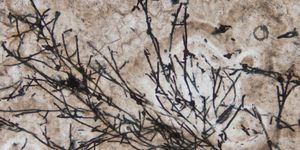Invasive species reduce water resources in Ethiopia
An invasive evergreen tree, known as Prosopis juliflora, is quite the thirsty species. Prosopis has taken over large swaths of the Afar Region in Ethiopia and while one might think the added green does the landscape well, in fact, the tree has become a persistent threat to native species, stealing precious water resources in the already arid habitat. Now a team of Ethiopian, South African and Swiss scientists has collaborated together to show just how much of a threat Prosopis is to native plants. Their findings are published in the journal Scientific Reports.
"We found that single trees of the evergreen Prosopis consume between 1-36 liters of water per day, depending on stem diameter and site conditions,” comments lead author Dr. Hailu Shiferaw. “Prosopis trees not only use water throughout the year but even consume more water during the dry season when almost all native plants have shed their leaves. The high sap flow of Prosopis in the drylands throughout the year may be due to exceptionally deep roots that penetrate up to 50m below the surface, where they tap into groundwater that cannot be used by native trees with shorter roots."
With the invasion of Prosopis extending into the floodplains of the Awash River and the surrounding dryland habitats, the researchers estimate that these trees consume approximately 3.1-3.3 billion m3/year of water annually in the Afar Region. This unthinkable quantity of water, which could otherwise support native species or profitable crops such as cotton and sugarcane, is a lost opportunity, says the team.

Senior author Dr. Urs Schaffner is Head Ecosystems Management at CABI in Switzerland, explains, "Since its introduction in the Afar Region in the 1980s, Prosopis has invaded 1.2 million hectares of land. Thus, unless the spread of Prosopis is contained and the density reduced in areas where it has become established, this invasive tree is likely to have serious consequences for sustainable livelihoods in the region. The estimated net benefits from water savings alone would strongly justify the implementation of a coordinated control program." The team points toward South Africa’s “Working for Water” program, which aims to control invasive alien trees, as a model that could be applicable in Ethiopia.
Sources: Scientific Reports, Eureka Alert








